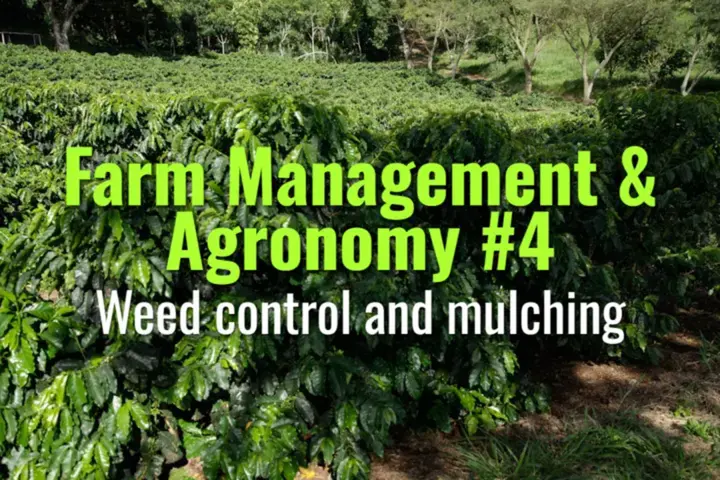Weed control and mulching
This topic explains the importance of weed management and mulching in coffee farming, showing how these practices improve plant health, conserve resources, and boost sustainability.
- Coffee Basics Nerds
- 2 min read
Article 4 of 12 in Farm Management & Agronomy/

Weed Control
- Why weeds matter:
- Compete with coffee for water, nutrients, and light.
- Harbor pests and diseases.
- Increase management costs if left unchecked.
Methods of Weed Control
- Manual/Mechanical:
- Hand weeding, hoeing, or mowing between rows.
- Labor-intensive but eco-friendly.
- Chemical (Herbicides):
- Effective for large areas but risk of soil degradation and resistance.
- Often avoided in specialty and certified systems.
- Cultural Methods:
- Cover crops planted to suppress weed growth and improve soil fertility.
- Shade management reduces weed pressure by lowering light at the soil surface.
Mulching
- Definition: Covering soil with organic or inorganic material.
- Materials: Coffee husks, pruned leaves, grass cuttings, straw, compost, or plastic sheets.
- Benefits:
- Conserves soil moisture by reducing evaporation.
- Suppresses weed growth.
- Improves soil fertility as organic mulch decomposes.
- Prevents soil erosion and moderates soil temperature.
- Encourages beneficial soil microorganisms.
Integrating Weed Control and Mulching
- Mulching reduces need for herbicides and frequent manual weeding.
- Combined strategy enhances soil health while reducing costs.
- Cover crops can double as mulch after cutting.
Best Practices
- Apply mulch at least 5–10 cm thick around the base of trees, keeping a small gap near the stem to prevent rot.
- Renew mulch regularly, especially before dry seasons.
- Choose weed control methods appropriate for farm size, labor availability, and sustainability goals.
Lasting Importance
Weed control and mulching are fundamental agronomic practices. Together, they:
- Reduce competition and stress on coffee plants.
- Enhance soil health and water retention.
- Support long-term productivity and sustainability.
By integrating these methods, farmers can improve both yields and coffee quality while lowering environmental impact.